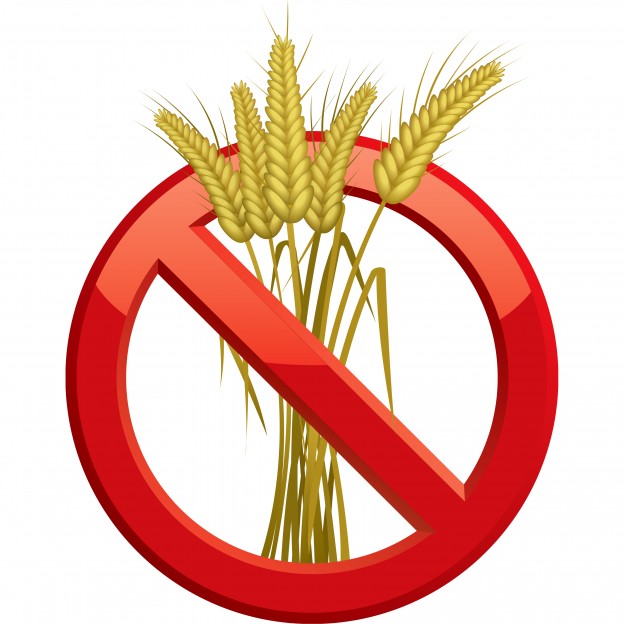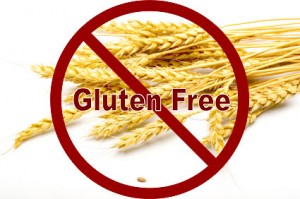By Anthoney J. Andersen – Steroidal.com
While you’re out grocery shopping – apathetically gathering the ingredients that will create this week’s meals – you’ve probably noticed that more and more grocery stores are stocking their shelves with “gluten-free” foods.
But what is gluten? And why all the hype surrounding a gluten-free diet?
Let’s take a closer look at the diet that more and more Americans are turning to, and get to the bottom of why that one friend or family member insists that you cater to his or her “special” needs when it comes to their strict – gluten-free – regimen.
THE GLUTEN EFFECT
In a society that prides itself in following the latest fads and trends, there’s no wonder that the gluten-free diet has become increasingly commercialized.
According to Mayo Clinic, a gluten-free diet consists of eliminating the protein gluten. Gluten is found in grains such as wheat, barley, rye and triticale – a blend of wheat and rye.
The main focal point behind a gluten-free diet is to treat individuals with celiac disease.
Celiac disease is an immune deficiency in which the immune system attacks the lining of the small intestine.
According to Harvard Medical School, a biopsy and certain blood tests are used to assess this damage and diagnose a person with the disease.
Celiac disease is genetic and affects each person differently.
This attack on the small intestine is triggered by gluten, and the digestive damage that can occur is diarrhea, anemia, bone pain, bloating, constipation, headache and difficulty concentrating.
“The market for gluten-free products is exploding,” says Peter H.R. Green, MD, director of the Celiac Disease Center at Columbia University. “We don’t know exactly why, either. Many people may just perceive that a gluten-free diet is healthier.”
Until recently, experts thought this intestinal damage was only caused by gluten. However, recent data has concluded that the damage can also be caused by a condition called nonceliac gluten sensitivity.
“It causes similar symptoms,” says Dr. Daniel Leffler, an international authority on celiac disease and an assistant professor of medicine at Harvard Medical School, “but there’s no intestinal damage.”
“We don’t know why this happens,” Dr. Leffler explains, “but we do know gluten and related proteins in grains can draw water out of the intestines and feed bacteria in the intestines, causing gas, bloating and indigestion.”
If you are considering switching to a gluten-free diet – then like with most things – it will take some getting use to. You may become frustrated with the diet’s restrictions, and feel deprived of certain luxury foods that you once enjoyed – but that anguish will soon come to pass.
You may find that there are so many more choices to choose from than before – like bread and pasta, for example.
The following is a list of healthy and delicious foods that are gluten-free:
- Beans, seeds, nuts (in their natural, unprocessed form).
- Fresh eggs.
- Fresh meats, fish, poultry (not breaded, batter-coated, or marinated).
- Fruits and vegetables.
- Most dairy products.
When looking at the packaging of most food products, it’s extremely important to make sure the foods aren’t blended or processed with gluten-containing grains.
The following starches can be part of a gluten-free diet:
- Buckwheat.
- Corn and cornmeal.
- Flax.
- Quinoa.
- Millet.
- Rice.
- Soy.
- Tapioca.
Furthermore, always avoid the following foods unless marked as “gluten-free”:
- Beer.
- Breads.
- Cakes and pies.
- Cereals.
- Cookies and crackers.
- French fries.
- Salad dressings.
- Soups and soup bases.
- Pasta.
- Imitation meat or seafood.
MANAGING SUCCESS
According to WebMD, if you have already been diagnosed with celiac disease, then you’re probably malnourished, and should consult a registered dietician first, before embarking on a gluten-free diet.
“If you believe you have nonceliac gluten sensitivity, you can try the gluten-free diet just long enough to see if it makes you feel better,” says Dr. Leffler. “But you should then meet with a dietician to work out a plan that ensures you’ll get enough fiber and vitamins for the long term.”
Even though adopting a gluten-free diet can help many individuals battle celiac disease, it can also be a risky endeavor on your health as well, because it requires you to give up wheat, which has become an essential part of the American diet.
“Any time you eliminate whole categories of food you’ve become accustomed to eating, you run the risk of developing nutritional deficiencies,” says Green.
According to the American Dietetic Association, gluten-free products tend to be drained of certain essential vitamins and minerals such as B vitamins, calcium, iron, zinc, magnesium and fiber.
“There’s little point in taking that risk unless you genuinely have celiac disease,” says Green.
“Eating a healthy, gluten-free diet means constantly monitoring what you eat, “ Green continues. “This isn’t something that anyone should do casually.”
Choose wisely.








